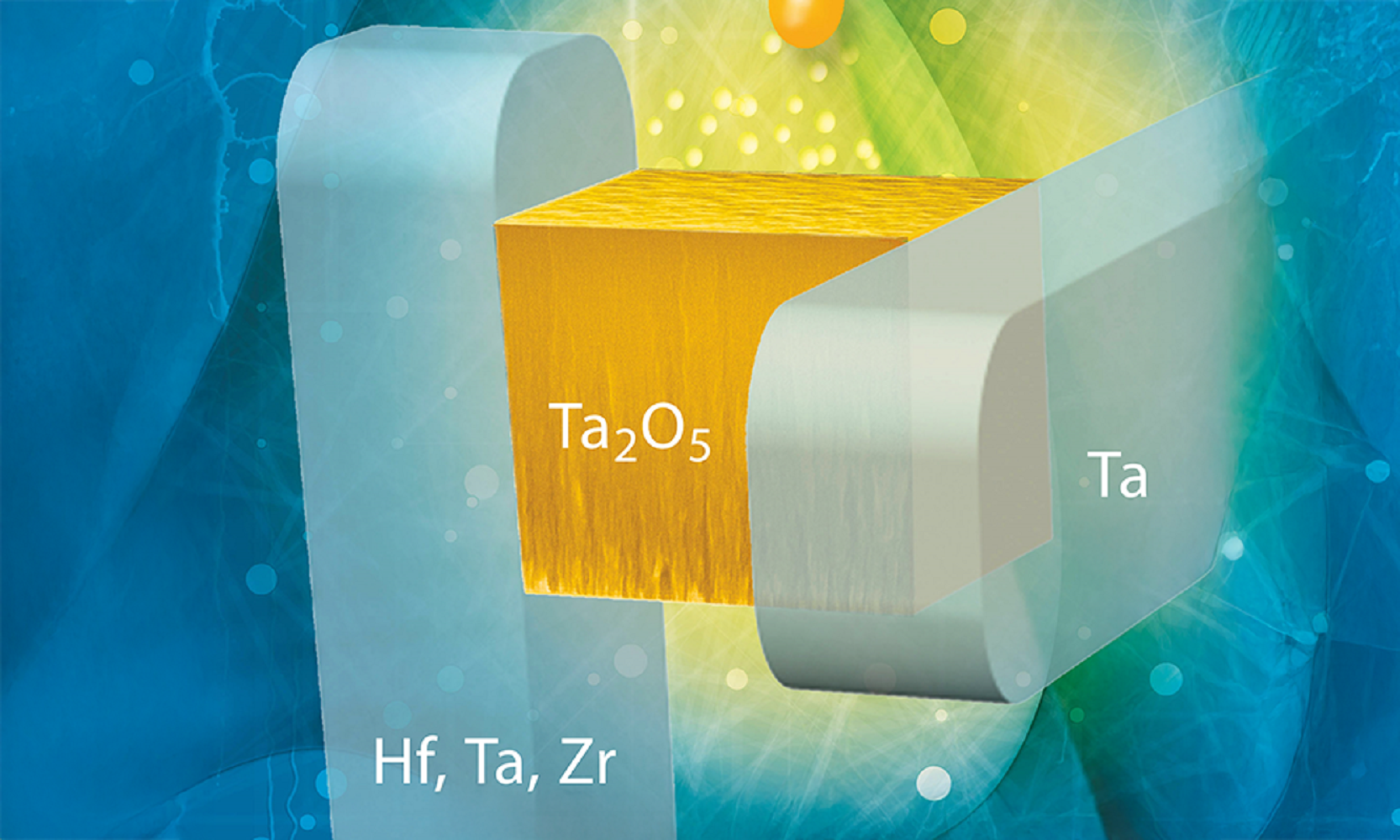They require extremely little power and behave similarly to brain cells: so-called memristors. Jülich researchers led by Ilia Valov have now presented novel memristive components in Nature Communications that have significant advantages over previous versions: They are more robust, function in a wider voltage range and can be operated both analogue and digitally. With these properties, they could solve the problem of ‘catastrophic forgetting’, in which artificial neural networks abruptly lose what they have already learnt.
Jülich/Germany, March 20, 2025 The problem of ‘catastrophic forgetting’ occurs when neural networks are trained for a new task. This is because a new optimisation simply overwrites a previous one. The brain does not have this problem because it can apparently adapt the degree of synaptic change; experts have recently begun to speak of so-called ‘metaplasticity’. They assume that it is only through these different degrees of plasticity that our brain can constantly learn new tasks without forgetting old content. This behaviour can be imitated with the new memristor.
‘The unique properties make it possible to use different switching modes to control the modulation of the memristor in such a way that stored information is not lost,’ explains Prof. Ilia Valov from the Peter Grünberg Institute (PGI-7) at Forschungszentrum Jülich.
Ideal candidates for neuro-inspired components
Modern computer chips are developing rapidly. They could be given a further boost by so-called memristors – an artificial word made up of ‘memory’ and ‘resistor’. Such components are basically nothing more than a resistor with a memory: the electrical resistance changes depending on the voltage applied and, unlike classic switching elements, the resistance value remains the same after the voltage is switched off. This is due to the fact that memristors can change structurally – for example, because atoms are deposited on the electrodes. ‘Memristive elements are considered ideal candidates for adaptive, neuro-inspired computer components modelled on the brain,’ says Ilia Valov.
However, despite considerable progress and efforts, the commercialisation of components is progressing more slowly than expected. This is mainly due to the often high error rate in production and the short service life of the products. In addition, they react sensitively to heat development or mechanical influences, which can lead to frequent malfunctions during operation. ‘Basic research is therefore essential in order to better control nanoscale processes,’ says Valov, who has been working in this field of memristors for many years. ‘We need new materials and switching mechanisms to reduce the complexity of the systems and increase the range of functionalities.’
The chemist and materials scientist, together with German and Chinese colleagues, has now been able to announce an important success in this regard: ‘We have discovered a fundamentally new electrochemical memristive mechanism that is chemically and electrically more stable,’ explains Valov. The development has now been presented in the journal ‘Nature Communications’.
A new mechanism for memristors
‘So far, two main mechanisms have been identified for the functioning of so-called bipolar memristors: ECM and VCM,’ explains Valov. ECM stands for ‘electrochemical metallisation’ and VCM for ‘valence change mechanism’.
In ECM memristors, a metallic filament forms between the two electrodes: a tiny ‘conductive tongue’ that changes the electrical resistance and dissolves again when the voltage is reversed. The energy barrier (resistance) of the electrochemical reaction is regarded as a critical parameter. This design enables a low switching voltage and fast switching times. However, the generated states are variable and rather short-lived.
In VCM memristors, on the other hand, the resistance is not controlled by the movement of metal ions, but by the movement of oxygen ions at the interface between the electrode and the electrolyte – by changing the so-called Schottky barrier. The process is comparatively stable, but requires high switching voltages.
Both types of memristor have various advantages and disadvantages. ‘We therefore considered building a memristor that combines the strengths of both types,’ explains Ilia Valov. This was actually considered impossible by experts. ‘Our new memristor is based on a completely different principle: it uses a filament made of metal oxides, not a purely metallic one like ECM,’ explains Valov.
This filament is formed by the movement of oxygen and tantalum ions and is stable. It never dissolves completely. ‘Basically, you can imagine that the filament is always present, at least at the beginning, and is only chemically changed,’ says Valov. The novel switching mechanism is therefore very robust. The scientists also refer to it as a filament conductivity change mechanism (FCM).
The corresponding components have several advantages: they are chemically and electrically more stable, more resistant to high temperatures, have a wider voltage window and require lower voltages for production. As a result, fewer components burn out during the manufacturing process, meaning that the reject rate is lower and their service life is also longer.
Prospective solution against ‘catastrophic forgetting’
What’s more, the different oxidation levels allow the memristor to be operated in binary and/or analogue mode. While binary signals are digital and can only output two states, analogue signals are continuous and can assume any intermediate value. This combination of analogue and digital behaviour is particularly interesting for neuromorphic chips, as it can help to overcome the problem of ‘catastrophic forgetting’.
In a simulation, the researchers have already implemented the new memristive component in a model of artificial neural networks. The system achieved a high level of accuracy in pattern recognition with several image data sets. In future, the team wants to look for other materials for the memristors that may function even better and more stably than the version now presented. ‘Our results will further advance the development of electronics for computation-in-memory applications,’ Valov is certain.
Originalpublikation:
Chen, S., Yang, Z., Hartmann, H. et al.
Electrochemical ohmic memristors for continual learning.
Nat Commun 16, 2348 (2025). DOI: (https://doi.org/10.1038/s41467-025-57543-w)
Weitere Informationen:
http://Pressemitteilung des Forschungszentrums Jülich (https://www.fz-juelich.de/de/aktuelles/news/pressemitteilungen/2025/neuartige-memristoren-gegen-das-katastrophale-vergessen-der-ki)
ImageSource
Chen, S., Yang, Z., Hartmann, H. et al., Nat. Commun., (https://doi.org/10.1038/s41467-025-57543-w), Schematic representation of the new memristor


